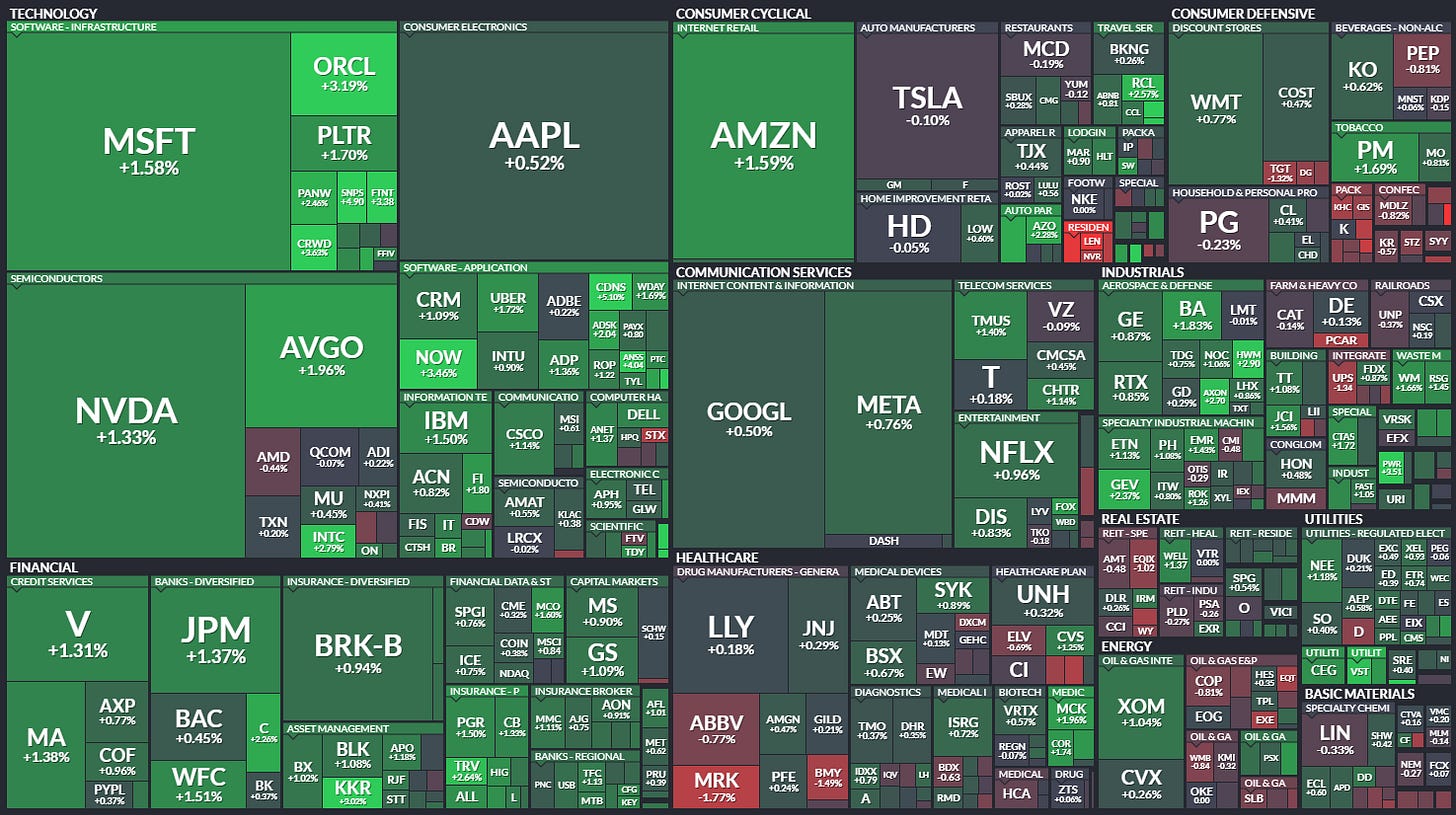The past week saw U.S. equity markets close the quarter in positive territory, despite ongoing uncertainty around trade policy and fiscal decisions. The S&P 500 reached a new all-time high, while the Nasdaq and Dow also posted weekly gains. Investors reacted to several major developments: the passage of a critical debt-ceiling bill, strong labor market data, progress in trade negotiations, and anticipation of the upcoming earnings season.
Political Developments: Default Risk Removed
One of the week's most significant events was the final approval of the tax and spending reconciliation bill. Passed by both chambers of Congress and sent to the president for signing, the bill raises the U.S. debt ceiling by $5 trillion, preventing the risk of a technical default at least until 2027. However, according to the Congressional Budget Office (CBO), this move is expected to increase the federal deficit by $3.3 trillion over the next decade.
While the fiscal stimulus is a short-term positive for the economy, the growing debt burden may fuel inflationary concerns and exert pressure on the bond market — which already started to show signs of strain by the end of the week.
Labor Market: Data Strengthens the Fed’s Position
Despite a negative surprise from the ADP employment report, which showed a 33,000 job decline — the first drop in 2.5 years — other labor data confirmed a robust employment picture. Nonfarm payrolls rose by 147,000 in June, beating the 106,000 forecast. The unemployment rate unexpectedly fell to 4.1%, against projections of a rise to 4.3%. Average hourly earnings increased by just 0.2% month-over-month and 3.7% year-over-year — both below expectations and indicative of easing wage-driven inflation.
In response, market expectations for a Fed rate cut in July dropped sharply. Futures now assign less than a 5% chance of a rate cut at the July FOMC meeting — down from 23% a week earlier. The resilience of the labor market is clearly challenging dovish market bets.
Bond Market: Yields Rise Amid Fiscal and Inflation Risks
Treasury yields climbed notably during the week. The 10-year U.S. Treasury yield rose to 4.35%, hitting multi-week highs. The upward pressure came from stronger labor data, lower expectations for Fed easing, and the anticipated increase in bond issuance to finance the growing deficit. Inflation expectations also rose, with the 10-year breakeven rate climbing to 2.34%.
Markets are beginning to price in the likelihood that the Fed will hold rates steady longer than previously expected — and not ease policy as quickly as some investors had hoped earlier in the year.
Trade and Global Developments
On the trade front, the U.S. announced a new agreement with Vietnam and continued negotiations with the EU. Tensions with Japan remain unresolved, with President Trump threatening tariffs of up to 35% if a deal isn’t reached by the July 9 deadline.
China provided a more positive backdrop. June PMI data from both NBS and Caixin beat expectations, supporting demand for cyclical and commodity-related assets. In contrast, Europe presented a more concerning picture: growth remains sluggish, unemployment unexpectedly rose, and ECB officials signaled caution on further rate cuts, even as inflation nears target levels.
Sector Highlights and Corporate News
Energy stocks led the way, boosted by a 3% rise in WTI crude oil prices. In contrast, technology stocks faced pressure early in the week, notably after a sharp drop in Tesla shares following President Trump's remarks about potentially revoking company subsidies.
Healthcare insurers came under pressure after Centene slashed its 2025 guidance, resulting in a 40% plunge in its stock — a move that weighed on the broader sector.
M&A activity remained strong, with Home Depot announcing a $4.3 billion acquisition of GMS and AbbVie agreeing to buy Capstan Therapeutics for $2.1 billion.
Looking Ahead
Next week marks the beginning of the second-quarter earnings season. According to Bloomberg Intelligence, consensus estimates call for earnings growth of just 2.8% year-over-year — the weakest pace in two years. Only six of the eleven S&P 500 sectors are expected to post positive earnings growth, according to Yardeni Research.
Investors will also closely monitor developments in U.S. trade talks with the EU and Japan, especially ahead of the July 9 tariff deadline. Additional Fed commentary and fresh inflation data will further shape market sentiment.
The U.S. stock market ended the quarter on a high note, but key tests lie ahead. A strong labor market and firm economic data limit the Fed’s ability to cut rates, while a rising fiscal deficit and trade uncertainties could keep inflationary pressures elevated. Combined with muted corporate profit expectations, this sets the stage for increased market volatility in the coming weeks.














Share this post